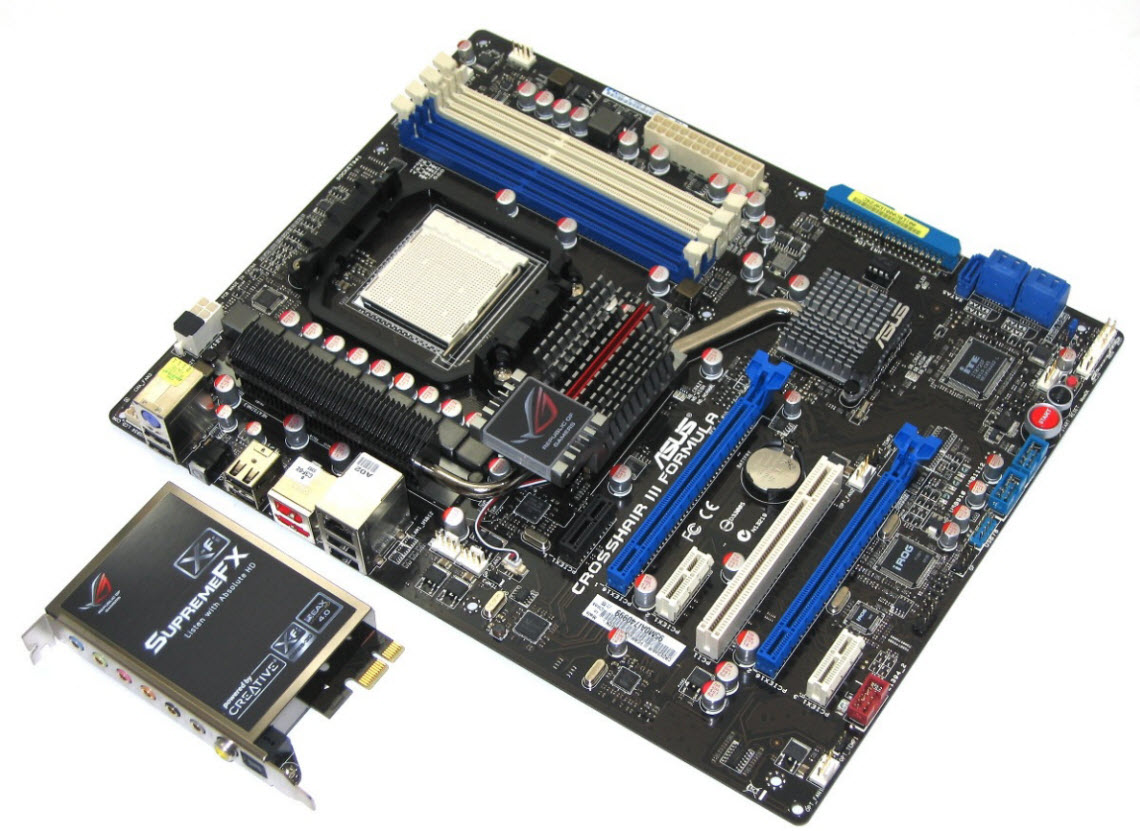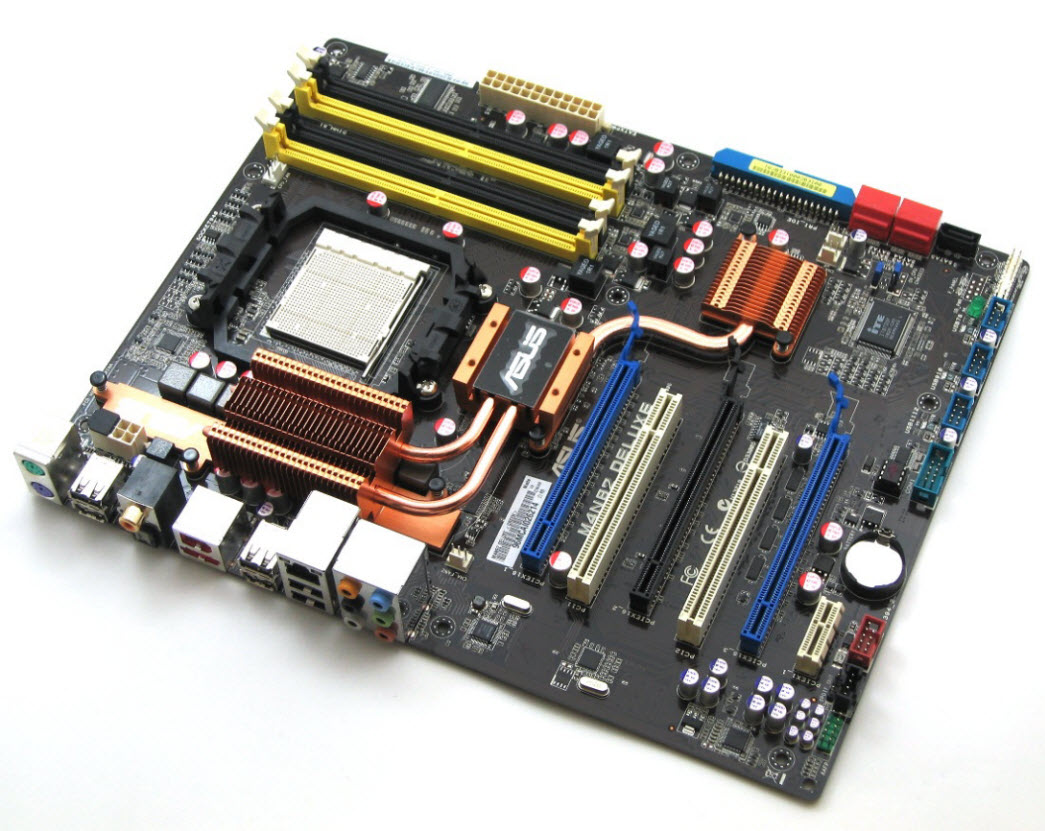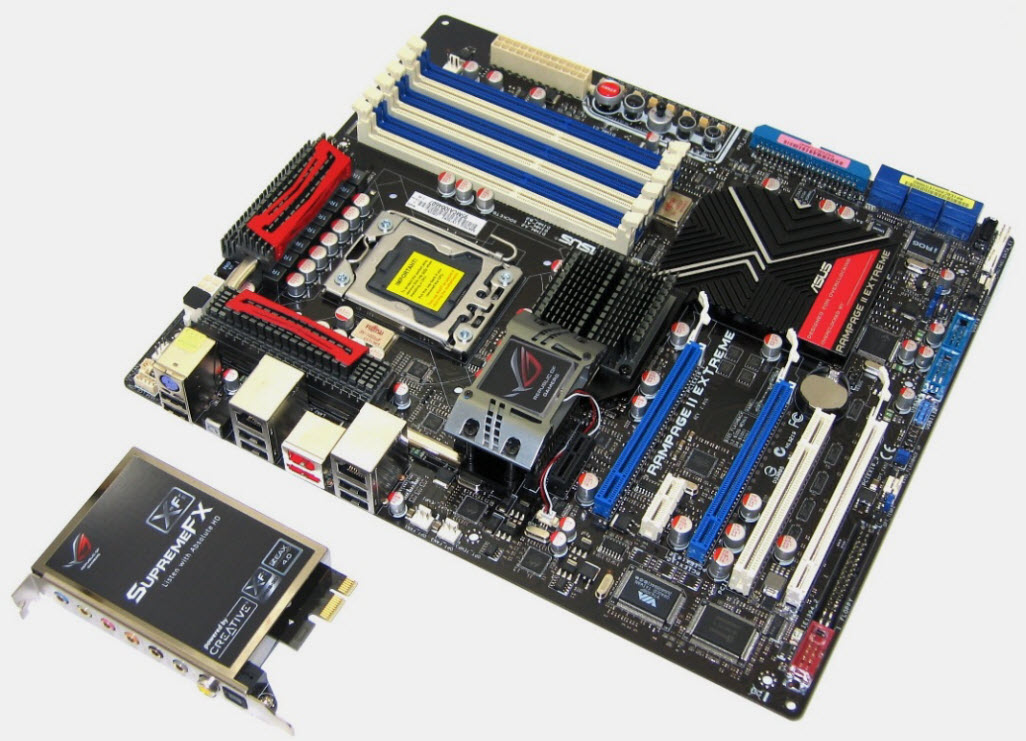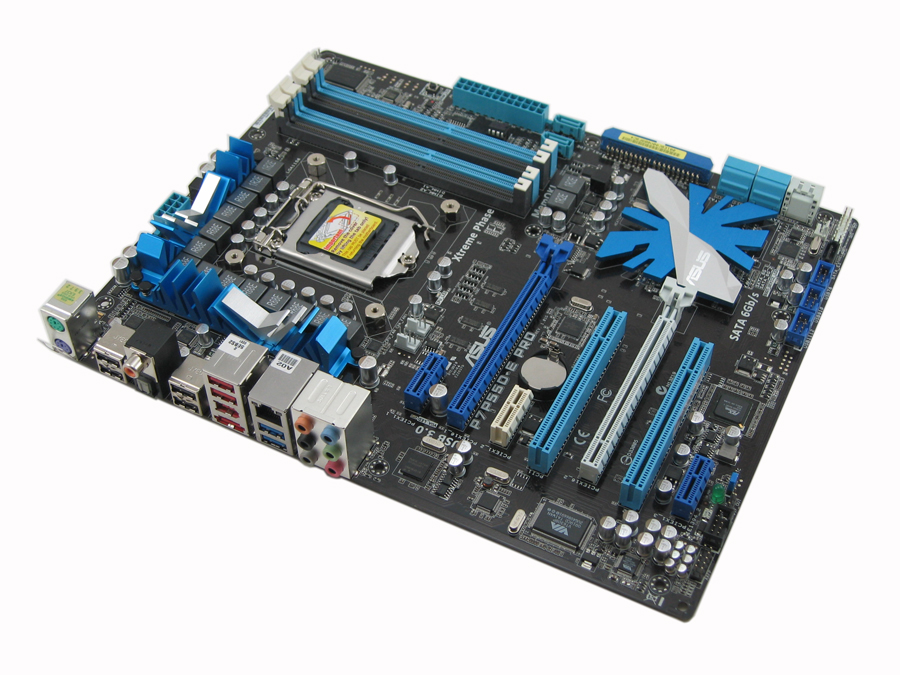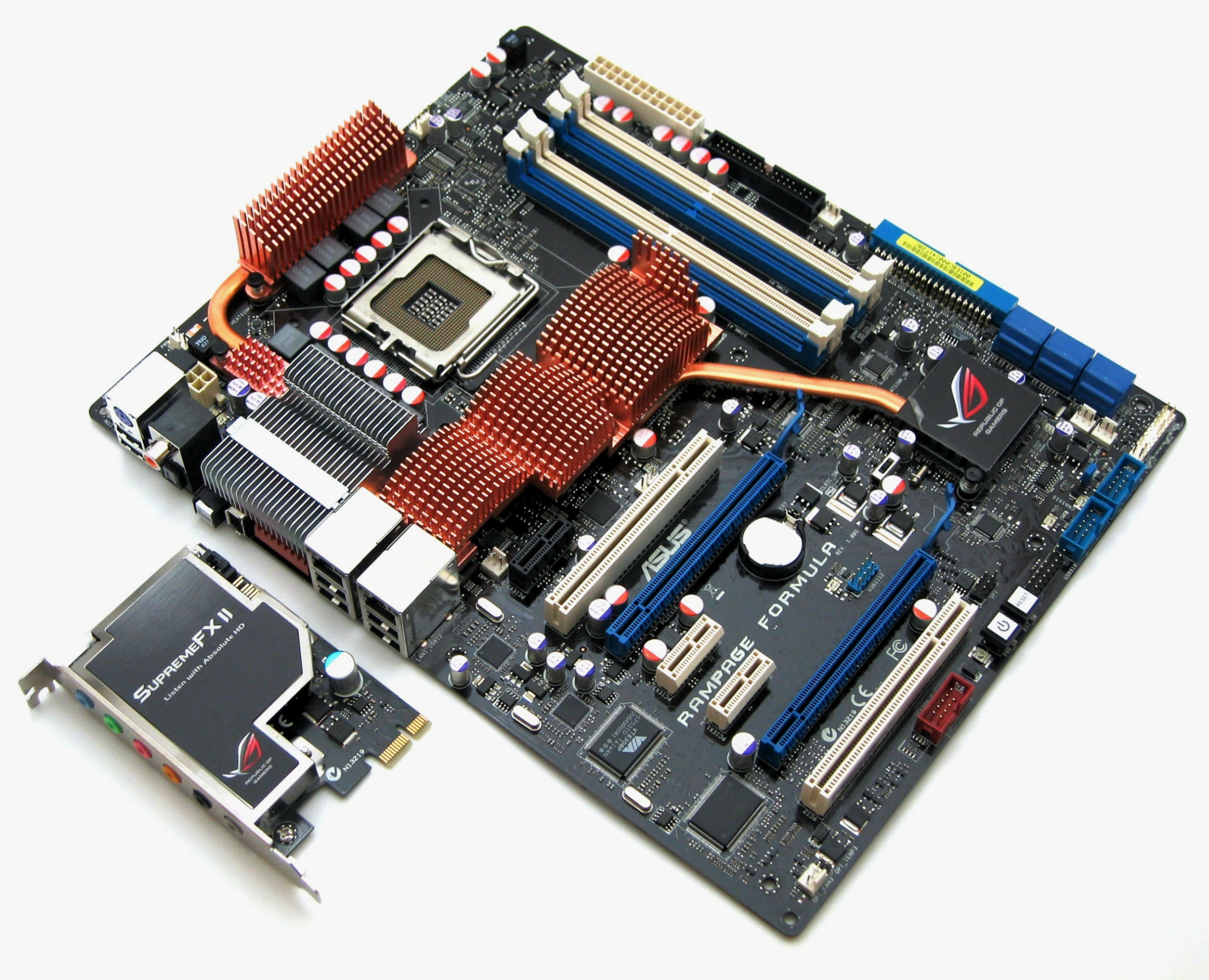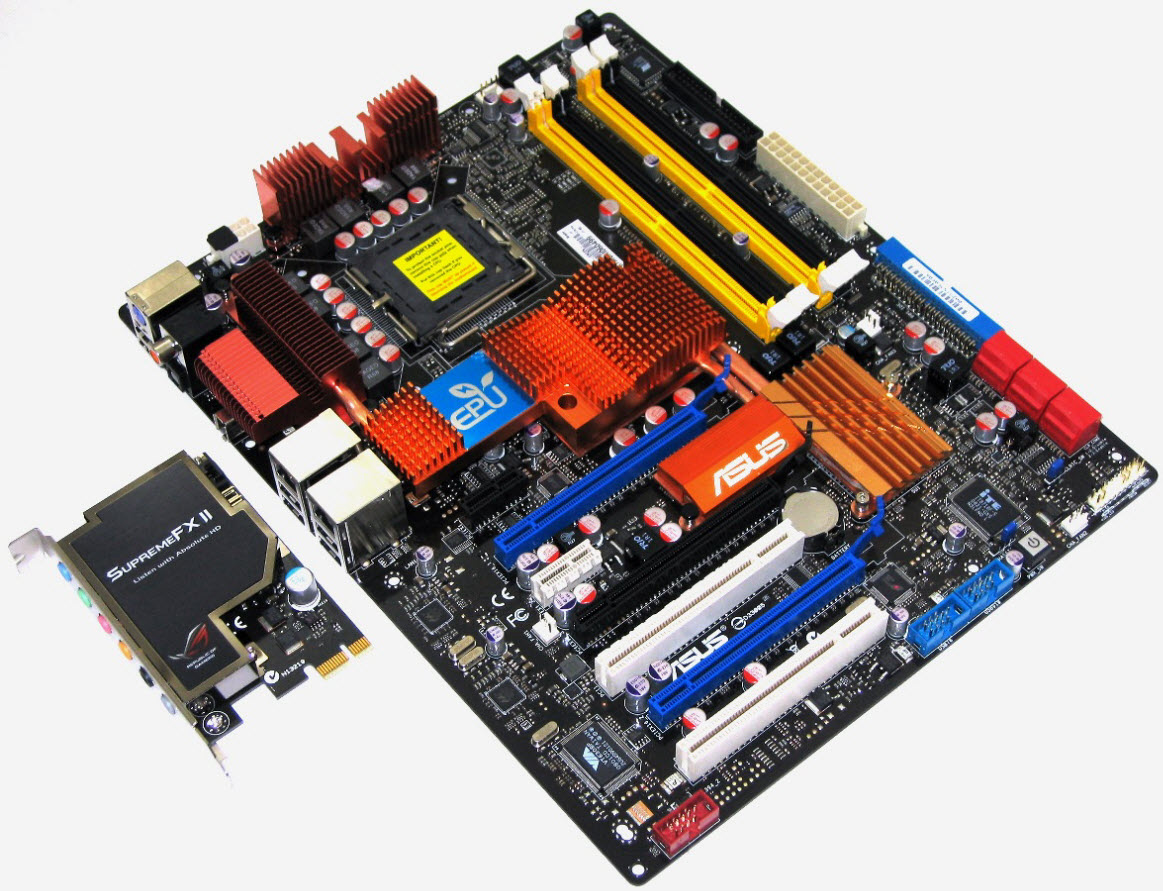Part 4: Building A Balanced Gaming PC
What does it mean to build a truly-balanced PC? How great would it be to piece together a machine bottlenecked by neither CPU or GPU? We set forth to measure the perfect balance in seven different games and four resolutions in this fourth of many parts.
Motherboards
Motherboards
Although our main focus in this series is on balance between the CPU and GPU, there’s obviously a lot more hardware involved in procuring respectable performance from your platform of choice. For our purposes, we built our test systems around enthusiast-class motherboards from Asus, picked for their stability, overclocking capabilities, and PCI Express connectivity, enabling ATI CrossFireX and/or Nvidia SLI support.
Socket AM3: Asus Crosshair III Formula
At the heart of this series' Socket AM3 testing is Asus' Crosshair III Formula, based on AMD’s 790FX/SB750 chipset combination. Four DIMM slots support dual-channel DDR3-1600 (overclocked) and DDR3-1333 memory settings, while two 16-lane PCIe 2.0 expansion slots support x16/x16 ATI CrossFireX technology.
Asus-specific features for this RoG-series enthusiast motherboard include MemOK (a memory compatibility tool), CPU Level Up (a simplified overclocking utility), TweakIT, a SupremeFX X-Fi eight-channel audio card, and an external LCD poster.
Socket AM3: Asus M4N82 Deluxe
The Asus M4N82 Deluxe will be put to use when it comes time to test dual GeForce cards in SLI paired up to our Socket AM3 processors.
Get Tom's Hardware's best news and in-depth reviews, straight to your inbox.
Based on the Nvidia nForce 980a SLI chipset, this Socket AM2+ motherboard has three 16-lane PCIe 2.0 slots supporting two cards in a x16 configuration or three at x8 signaling. The board has an 8+1 power phase design, four DIMM slots supporting dual-channel DDR2-1200 (overclocked) and DDR2-1066. It also includes eight-channel integrated sound.
LGA 1366: Asus Rampage II Extreme
The Asus Rampage II Extreme is based on Intel’s X58 Express chipset, and will be used throughout this series for our LGA 1366 platform.
This feature-packed motherboard is part of the Asus RoG (Republic of Gamers) series, and was designed with the overclocking community in mind. This works out well for us, since two of our balanced platform pieces will center on the effects of overclocking.
The three 16-lane PCIe 2.0 expansion slots support x16/x16 operation or x16/x8/x8 CrossFireX and SLI. The six DIMM slots support triple-channel DDR3-1800 (overclocked) and DDR3-1600 memory. A few of the other notable features unique to Asus' lineup include TweakIT (joystick-like overclocking control), ProbeIt (eight on-board detection points), Extreme Engine with ML Cap Design (the company's multi-phase power management system with multi-layer polymer caps), a SupremeFX X-Fi eight-channel audio card, and an external LCD Poster.
LGA 1156: Asus P7P55D-E Pro
Our newly added LGA 1156 platform utilizes the P7P55D-E Pro from Asus. Based on Intel’s P55 Express chipset, this motherboard features SATA 6Gb/s, USB 3.0, Asus 16-Hybrid Phase (12+2 phase power design + t.Probe), integrated VIA eight-channel HD audio, and overclocking features both beginners and advanced enthusiasts can appreciate.
Four DIMM slots support dual-channel DDR3-2200 (overclocked) and DDR3-1600 memory. The dual PCIe 2.0 x16 slots are configurable as a single 16-lane slot, or as dual eight-lane slots supporting both ATI CrossFire and Nvidia SLI technology.
LGA 775: Asus Rampage Formula
We use the Asus Rampage Formula for any LGA 775-based testing, aside from the Nvidia SLI configurations, which you'll see in an upcoming episode of this series.
Based on the Intel X48 Express chipset, this RoG-series motherboard has two 16-lane PCIe 2.0 slots supporting x16/x16 CrossFire operation and four DIMM slots supporting dual-channel DDR2-1200 (overclocked) and DDR2-1066 memory.
Overclocking-friendly features include Voltminder LED status reminders (essentially, a red-line equivalent for voltage), COP EX OC protection, loadline calibration (stabilizing CPU voltage under load), and cooling via the pin-fin thermal module. A SupremeFX II eight-channel audio card and external LCD poster are also part of the bundle.
LGA 775: Asus P5N72-T Premium
Based on the Nvidia nForce 780i SLI chipset and boasting two 16-lane PCIe 2.0 slots (plus one first-gen PCIe 16x slot), the Asus P5N72-T Premium supports 3-way Nvidia SLI technology (three cards at x16 signaling).
This LGA 775 motherboard has four DIMM slots supporting dual-channel DDR2-1200 (overclocked) and DDR2-1066. Plus, it comes bundled with the RoG Supreme FX II audio card.
Special thanks to Asus for arranging the motherboards needed to make this entire series possible.
-
wildeast "such as NVidia’s GeForce GTX 400-series and revamp the benchmark suite with some new DirectX 11 titles."Reply
i'll be waiting for that, and maybe some i5 cpu to see what fit sli best -
jsowoc "We set forth to measure the perfect balance in seven different games and four resolutions in this third of many parts." (?)Reply
I think you copied this paragraph from part 3 and forgot to change it to 4... ;-) -
theshonen8899 With the amount of love you guys have for the Athlon x3 I was really hoping to see it on here :\Reply
I guess I can kind of predict where it'd fall though. -
L0tus Brilliant piece.Reply
I wish I had read this before building my system as I can see that I clearly spent too much on my CPU instead of GPU (i5-750 + HD5770) . Would have done much better with (X2 550 BE + HD5850) !
...ain't hind sight a b***h!
Also interesting to see how GPUs really start to distinguish themselves at higher resolutions. Again, brilliant work. -
TheStealthyOne I built a computer for my brother using a Phenom ii 550 paired with a 5770, and it screams! Fantastic gaming chip! It just goes to show you can achieve fantastic performance by planning and balance.Reply -
garlik_bread Personally, i'd be interested to see results from a card with less han 1GB RAM on the GPU.Reply
On the lower end of the spectrum, with the lower resolutions, is the 1GB really necessary?
Basically, i have a 512MB Asus 5770 and want to validate my purchase :D -
plasmastorm Still running a Maximus formula 775 board with a Q6600, 8gb ram and a Radeon 5850 but this is certainly handy for future reference.Reply
Probably skipping the i5/i7 generation as I can still play anything at max settings on my 22" monitor while running a 2nd for a film tho :) -
descendency plasmastormStill running a Maximus formula 775 board with a Q6600, 8gb ram and a Radeon 5850 but this is certainly handy for future reference.Probably skipping the i5/i7 generation as I can still play anything at max settings on my 22" monitor while running a 2nd for a film thoReply
i5/i7 isn't a generation. it's like 5 or so.
It's the same thing as C2D and C2Q
